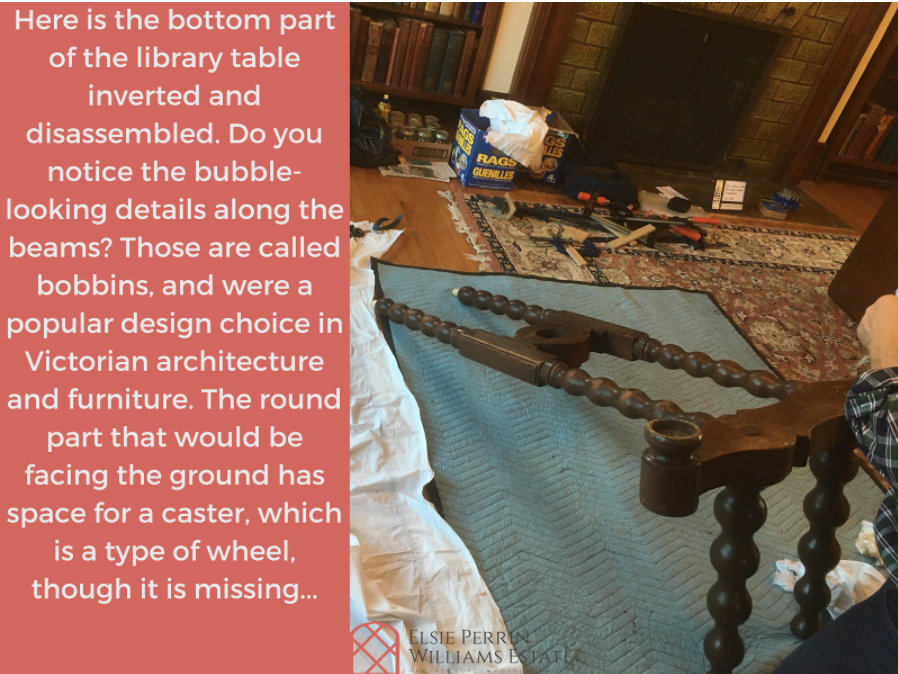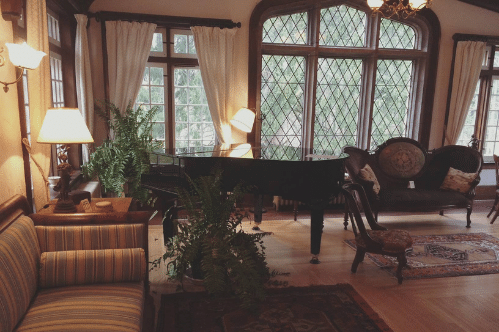The Elsie Perrin Williams Estate has been seeing some exciting conservation efforts in recent weeks, most notably, the fixing of the table in our library.
According to our conservator, the table had been restored before with giveaways such as dowels put into the base that had broken, as well as two screws and new dowels. Of course, a table of this age – estimated to have been first constructed in the 1880s or 90s due to the Victorian style make of it – would never have originally had screws.

This brings up an interesting conflict – what’s the point of furniture restoration?
Is it to make a piece look new again, make it as efficient and sturdy as possible, or is it more important to conserve the original feel and integrity of the piece?
It does depend on the piece in question, but with heritage properties and furniture, we choose to embrace the latter with the use of old-timey materials, practices, and finding beauty in the imperfect. As our conservation expert explains, it is less about restoration and more about conservation.
Furniture Restoration Techniques
One of the keys to furniture conservation is glue. While many homeowners would likely turn to adhesives like wood glue first (I know I would have) there are two protein glues primarily used in heritage conservation: hide glue and fish glue.
- Hide glue is made from the hides of animals like cattle and horses and will release with heat and water.
- Fish glue is a bit thicker than hide and is made from the swim bladders of primarily cod. Fish glue can be removed with just water.
Why are adhesives that can so easily be removed used? Reversible materials are fundamental to conservation. If adhesives like wood glue or other more modern materials are used, maintenance is more difficult to achieve, since the piece cannot be easily taken apart and inspected.

Also, it links back to the idea of embracing the piece as is – there was no such thing as modern adhesives in the 1880s, so using an old-fashioned glue is more true to the piece.
There is more to furniture conservation than just the restoration aspect. The Canadian Association of Professional Conservators is an organization of experts that examine and document artifacts, keeping track of conditions, materials used, as well as researching those materials and processes of building and teaching others. You can learn more about furniture conversation techniques on their website.
